Pinnacle - Crackajack -
Sunkist
Southland Ice Cream Company, 1937 - 1964
Betty Blick of Invercargill remembers
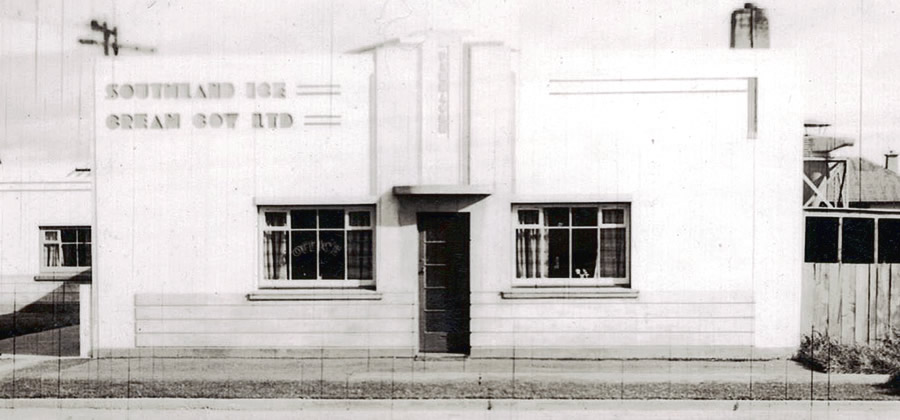
Southland Ice
Cream Co. factory, Tweed St..
- Blick family.
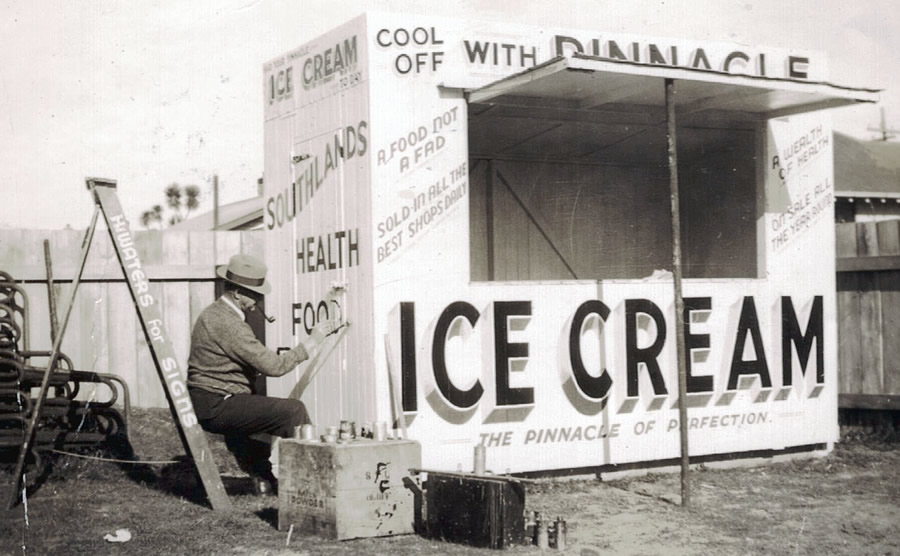
Pinnacle brand signage being applied to a stall.
- Blick
family.
My first day of employment at the office of the Southland Ice Cream Co,
was an easy one. There was no office furniture or telephone so I was
told to take a day off.
The following day I found that a table, chairs and shelves had been delivered and a telephone was being installed.
There were two offices. The lower half of the walls was pale green tiles and the upper half cream enamel paint.
For the first week ice cream was supplied by Crystal Ice Co. in Dunedin but production of Pinnacle ice cream was soon underway in the very modern factory.
The large main room of the factory housed a pasteuriser, homogeniser (viscoliser),
cooler, two 200 gallon ageing vats and a churn. Later on this room was
enlarged and a modern Vogt churn installed.
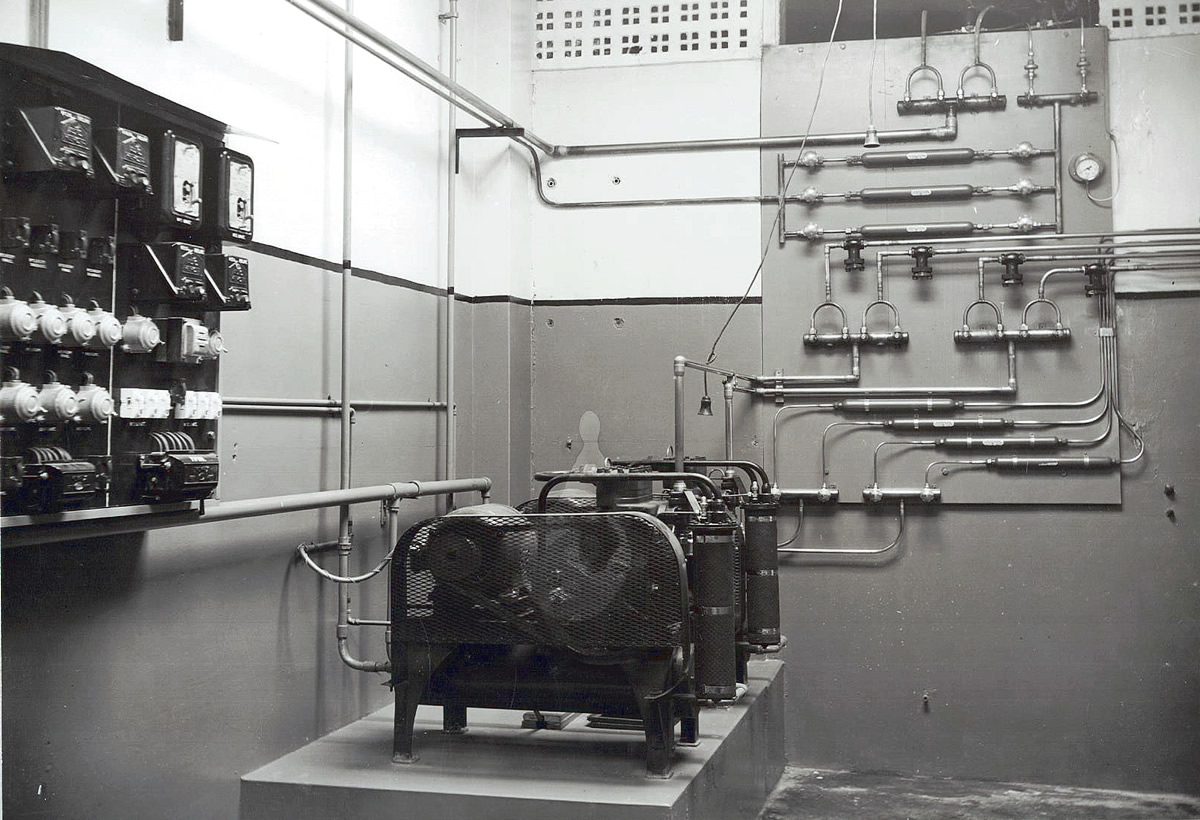
Southland Ice Cream Co. factory - electric Westinghouse refrigeration
compressors in the foreground and Imperial Brass "Torpedo" dehydrators
on the wall.
- Blick family.
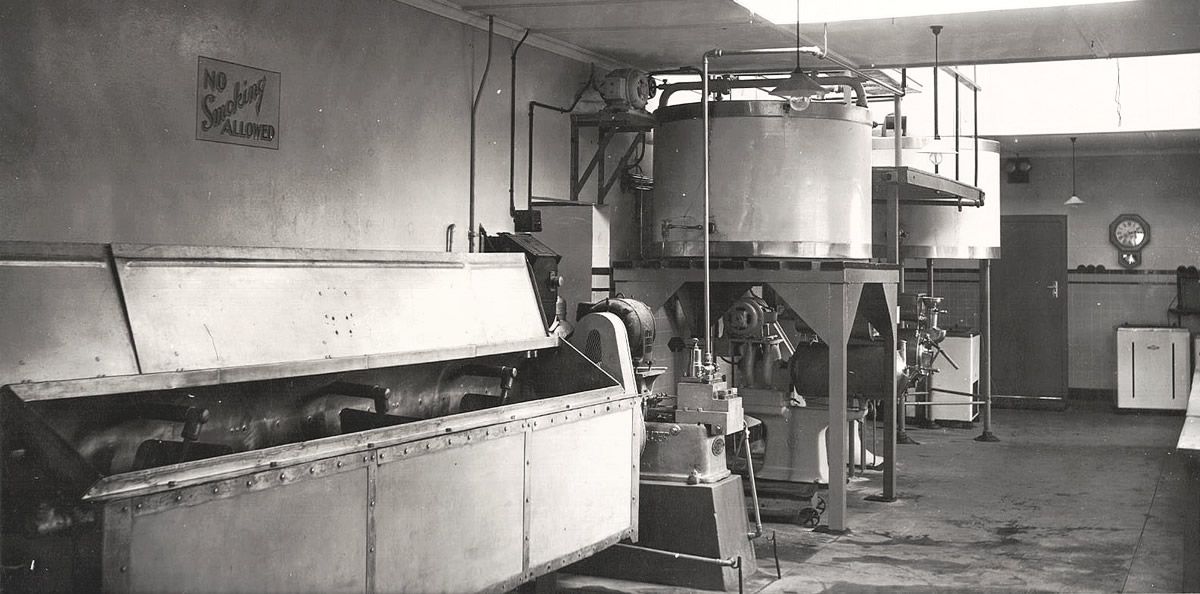
Mixing tank nearest camera, then homogeniser,
then two 200 gallon ageing
vats above and either side of two Vogt ice cream churns.
- Blick family.
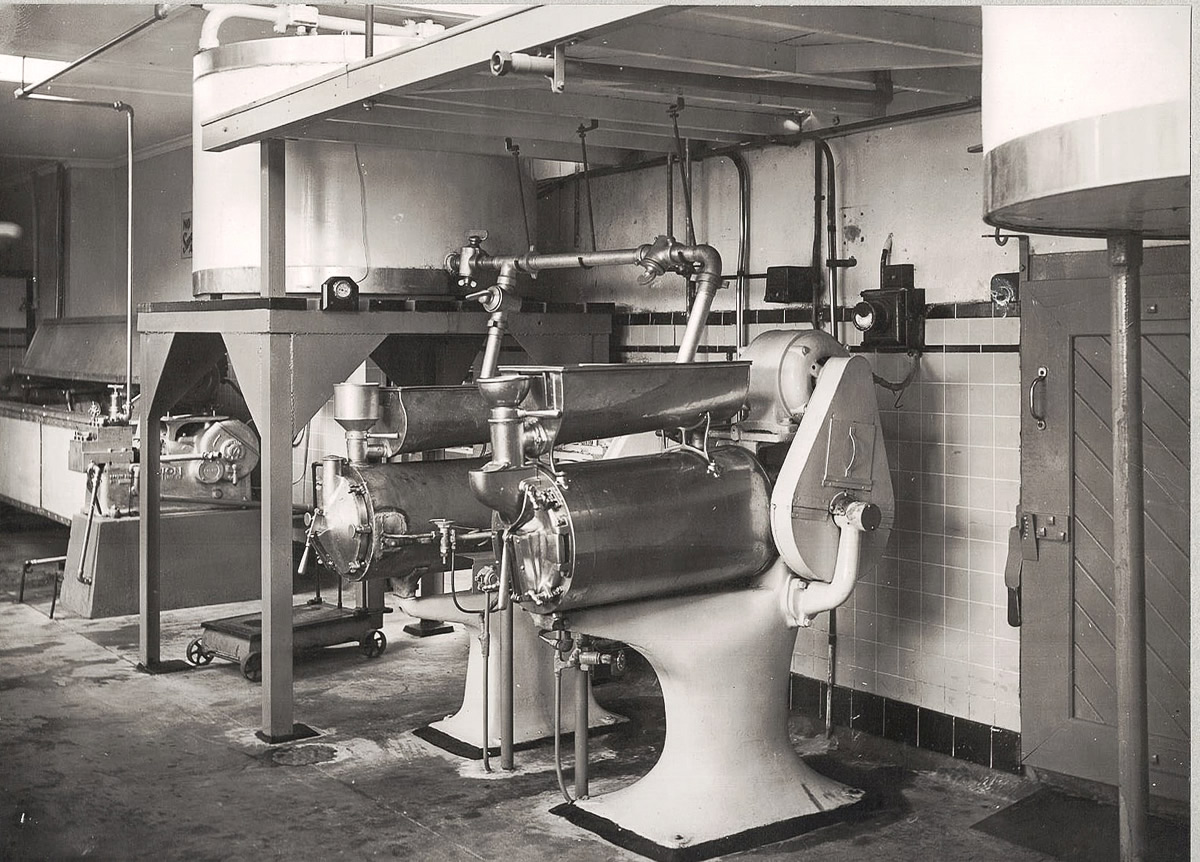
Two Vogt ice cream churns with ageing vats either side, above.
- Blick family.
Ice cream was sold in 3 gallon and 5 gallon cans and there was a can
wash up and sterilising room. All sterilising of cans and equipment
was done by steam (Wyandotte detergents). We also had a coal fired
boiler, an engine room, three freezing chambers and a bag room where
insulated canvas bags were stored and Country orders packed. An ice
tank was never used but the
space was later incorporated into the main factory.
There were three store rooms: one for large hundred weight cases of
skim milk powder (McPherson, Kemp & Co) and sugar from Rattrays which
was in 70lb bags. Forty pound boxes of unsalted butter (South Island
Dairy Federation)
were kept in a freezing room.
There was also a cone storage room for cartons of 3d and 6d cones. (1d
cones were not used).
Another store room held reams of vegetable parchment paper, bolts of cheese
cloth and cases of dipping chocolate and cocoa butter, flagons of vanilla
essence, crates of tinfoil Eskimo Pie wrappers, Hav-A-Heart bags and cartons,
and 6d and 1/- block cartons.
6d blocks were called "Sprats" to distinguish them from the 1/-
blocks.
We also had washrooms, toilets and a lunchroom for staff, as well as a
bicycle shed for staff cycles and garaging for vans.
The Chevrolet van was insulated and had rear and side doors. It was used
for
North,
South and Town deliveries.
The REO Speed Wagon was used for taking Country orders to the bus and rail depots.
Later a very modern Studebaker van was purchased.

"Pinnacle" branded Chevrolet and REO Speed Wagon delivery vans.
- Blick family.
When war broke out in 1939 rationing of butter, sugar and petrol affected the
ice cream industry and very strict rules were enforced. The butterfat content
of ice cream was not to fall below 8% and must not exceed 8.5%. Part of one storeroom
was partitioned off and made into a testing room for milk and cream.
The Health Inspector would call at any time and take samples to check that the
rules were obeyed. If you exceeded the 8.5% butterfat, then your ration would
be cut.
Ice cream mixes were balanced each day according to the butterfat content of
the milk cream. Milk came from Kennington and the factory took all the cream
the very excellent Borstal Farm could supply.
The Company hired out Frigidaire refrigerators to shop keepers and later purchased
some Kelvinator brand fridges.
The Eskimo Pie making machine was first used at the Dunedin
Exhibition in 1926. It was quite ingenious, cutting ice cream slabs into
pieces, dipping
them in
hot chocolate and sliding them onto the table to be hand wrapped and packed – a
time consuming process but one soon became quite adept at this, with practice.
A Hav-A-Heart novelty machine was purchased from America and in those early days
the
Hearts on sticks were bagged and packed by hand also.
.JPG)
Chevrolet and Studebaker delivery vans outside the Southland Ice
Cream Co. factory, Tweed St., displaying Crackajack, Hav-A-Heart and
Eskimo Pie advertising.
- Blick family.
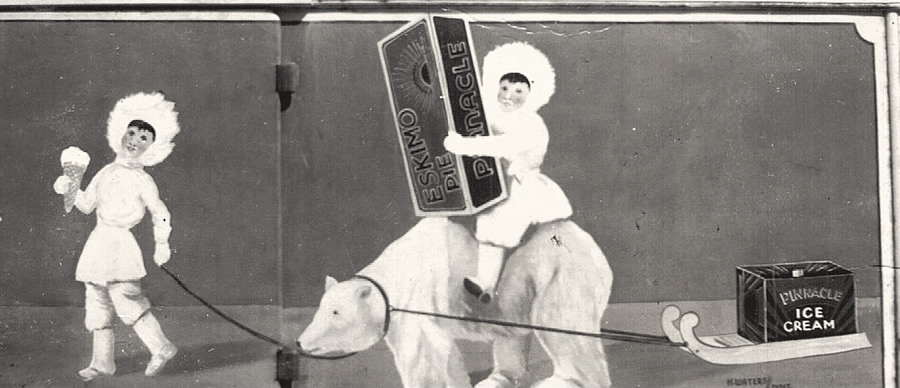
"Pinnacle Eskimo Pie" signage on Chevrolet delivery van.
- Blick family.

Eskimo Pie and Hav-A-Heart advertising on Studebaker delivery van. Bodywork
by Bath & Sons Ltd.
- Blick family.

Fred working a transportable Blix Cooling Station, Invercargill Showgrounds.
- Blick family.
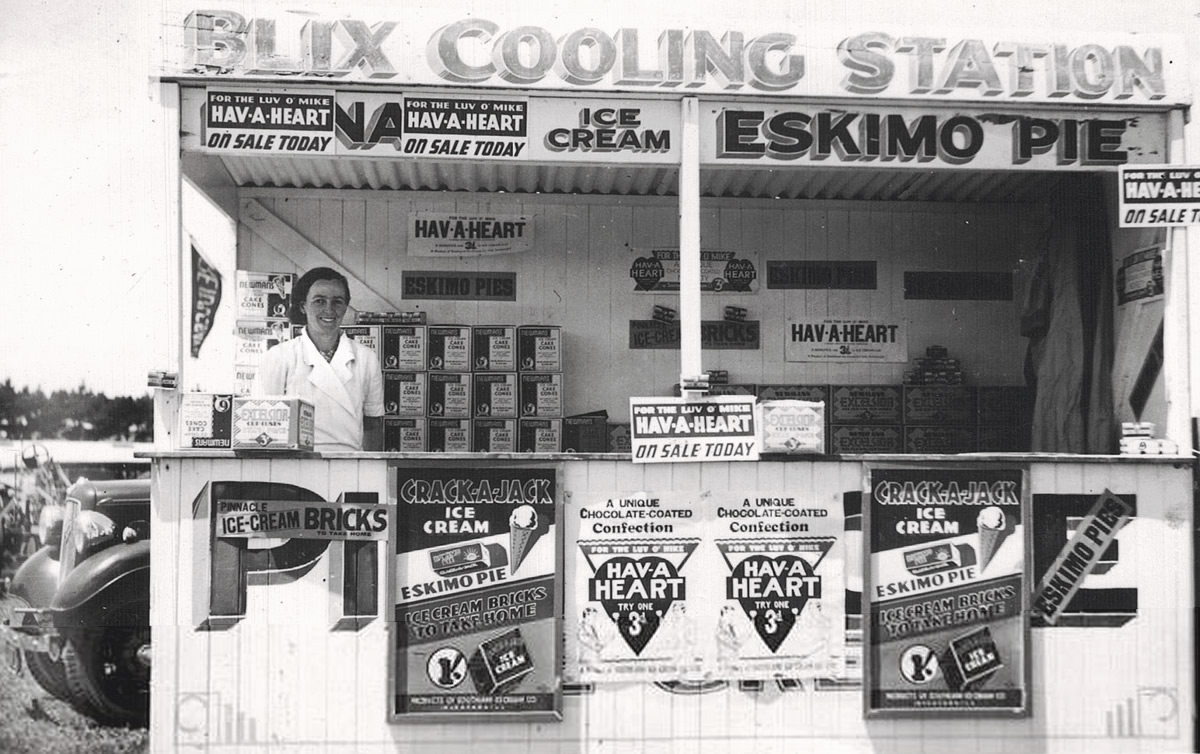
Dulcie Blick manning the Blix Cooling Station, Invercargill Showgrounds
(1940s?). Crackajack scoop ice cream, Pinnacle ice cream bricks, Eskimo
Pies and
chocolate-coated Hav-A-Heart novelties. Behind Dulcie are boxes of Newmans
ice cream cones for scooping, on the counter are Excelsior cup cones.
- Blick family.

Western Star, 16 August 1940
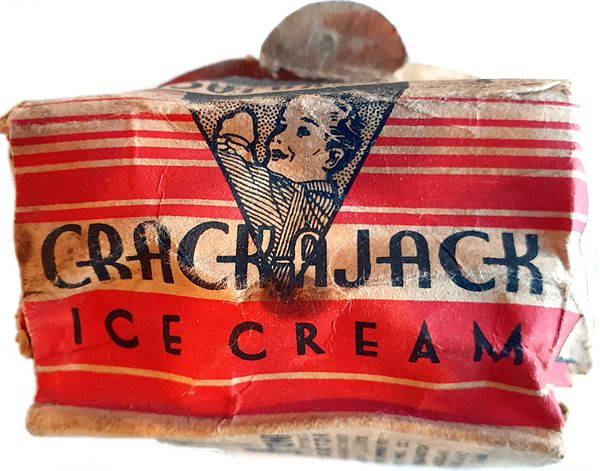
An old Crackajack brick carton, found by one of Fred's great-granddaughters
in a wall cavity during renovations.
- Blick family.
There were three Invercargill van delivery runs - North, Town and South
Invercargill. North and South were served twice a week and the town
three times. Orders were
despatched twice daily to H & H Motors, News bus, Southland Carrying Co and
Rail. Bluff orders were picked up from the factory by Bluff carrier King of
the Road,
Jack Harrison. |